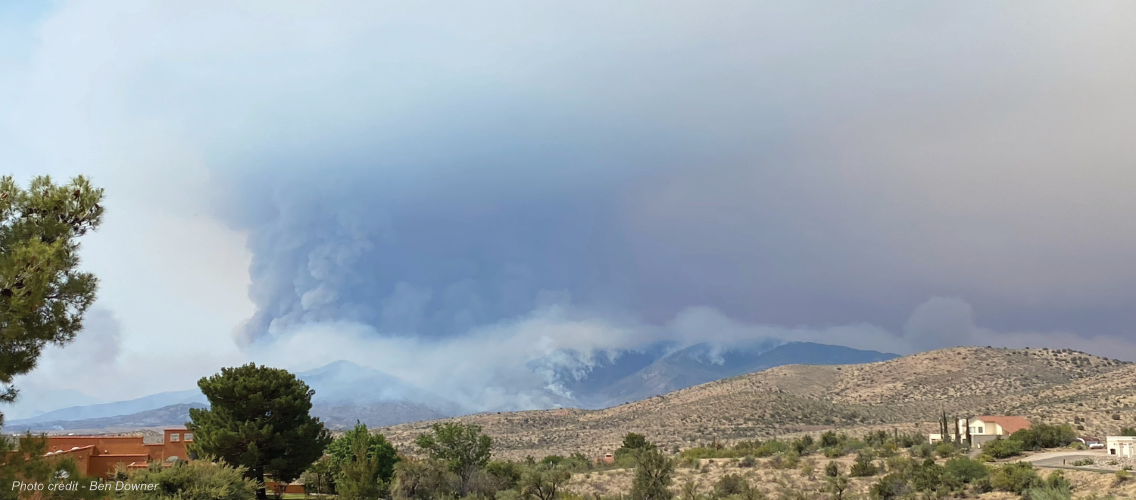
After the Fire Video Series
The 2021 Telegraph and Mescal Fires charred over 250,000 acres of land across Pinal and Gila Counties and the San Carlos Apache Reservation. A record monsoon season followed the flames, triggering floods and debris flows that threatened property and lives. Despite these hardships, natural disasters have a way of binding communities together, creating opportunities for collaboration toward recovery and resilience.
Recorded at public meetings on October 29 and 30, 2021, the After the Fire Video Series collects conversations about the status of local land and water resources following the Telegraph and Mescal Fires, priorities for post-fire recovery, how to prepare for future hazards and what it means to live in fire-adapted communities.
After the Fire is a collaborative effort by the Cobre Valley Watershed Partnership, Bullion Plaza Cultural Center & Museum, US Forest Service, Water Resources Research Center and UArizona Gila County Cooperative Extension.
Unfolding the Events of the Telegraph Fire
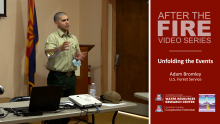
District Ranger Adam Bromley (Globe Ranger District, US Forest Service Tonto National Forest) provides a brief overview of the Telegraph Fire's progression, tackling common questions and misconceptions about the fire.
Setting the Stage for Fire
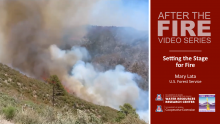
Fire Ecologist Dr. Mary Lata (US Forest Service Tonto National Forest) breaks down fire history and the changes to fuels and ecological communities leading up to the Telegraph Fire. She also unpacks how levels of fire severity influence recovery after the fire and what the burned landscape may look like in 5, 10 and 20 years.
Impacts to the Watershed
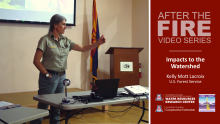
Forest Hydrologist Dr. Kelly Mott Lacroix (US Forest Service Tonto National Forest) discusses the Burned Area Emergency Response Assessment (BAER) and how soil burn severity impacts local watershed, focusing on factors that contribute to post-fire flooding.
Understanding the Aftermath
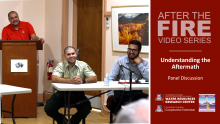
Concluding the first day of After the Fire, this panel discussion bridges scientific understanding of fire impacts on vegetation and watershed with the socio-economic factors related to recovery. This discussion features the following panelists:
- Mila Besich, Mayor, Town of Superior, AZ
- Adam Bromley, Globe District Ranger, US Forest Service Tonto National Forest
- Mary Lata, Fire Ecologist, US Forest Service Tonto National Forest
- Kelly Mott Lacroix, Forest Hydrologist, US Forest Service Tonto National Forest
- Carl Melford, Emergency Manager, Gila County
Welcome and First Day Recap
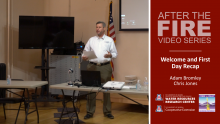
District Ranger Adam Bromley and University of Arizona Gila County Cooperative Extension Area Agent Chris Jones recap the first day of After the Fire and set the stage for the second day of presentations and panel discussions.
Why Grass is on the Agenda
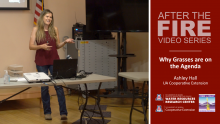
Invasive species and grasses have become part of the Tonto National Forest ecology. Area Assistant Agent Ashley Hall (University of Arizona Gila County Extension) explains what this means for recovery after the Telegraph Fire and how to adapt to these changing conditions.
Watch Why Grass is on the Agenda
A Fire Adapted Future
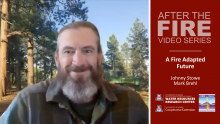
Southeastern states set an example of “living with fire” because they have a history and culture of fire. Arizona has a similar interval regime to this region and fire adapted ecosystem, although our climate is different. Mark Brehl (Arizona Program Forestry Supervisor, National Forest Foundation) and Johnny Stowe (Wildlife Biologist, South Carolina Department of Natural Resources) highlight incremental changes that are needed to move toward a culture of fire locally.
How We Work Together
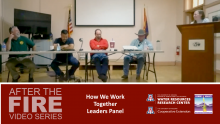
This panel discussion among local leaders sets the stage for how organizations and communities can work together during the Telegraph Fire recovery and how to coordinate for future disasters. Discussion panelists include:
- Woody Cline, Supervisor, Gila County
- Al Gameros, Mayor, City of Globe, AZ
- Sammy Gonzales, Mayor, Town of Miami, AZ
- Todd Pryor, Town Manager, Town of Superior, AZ

